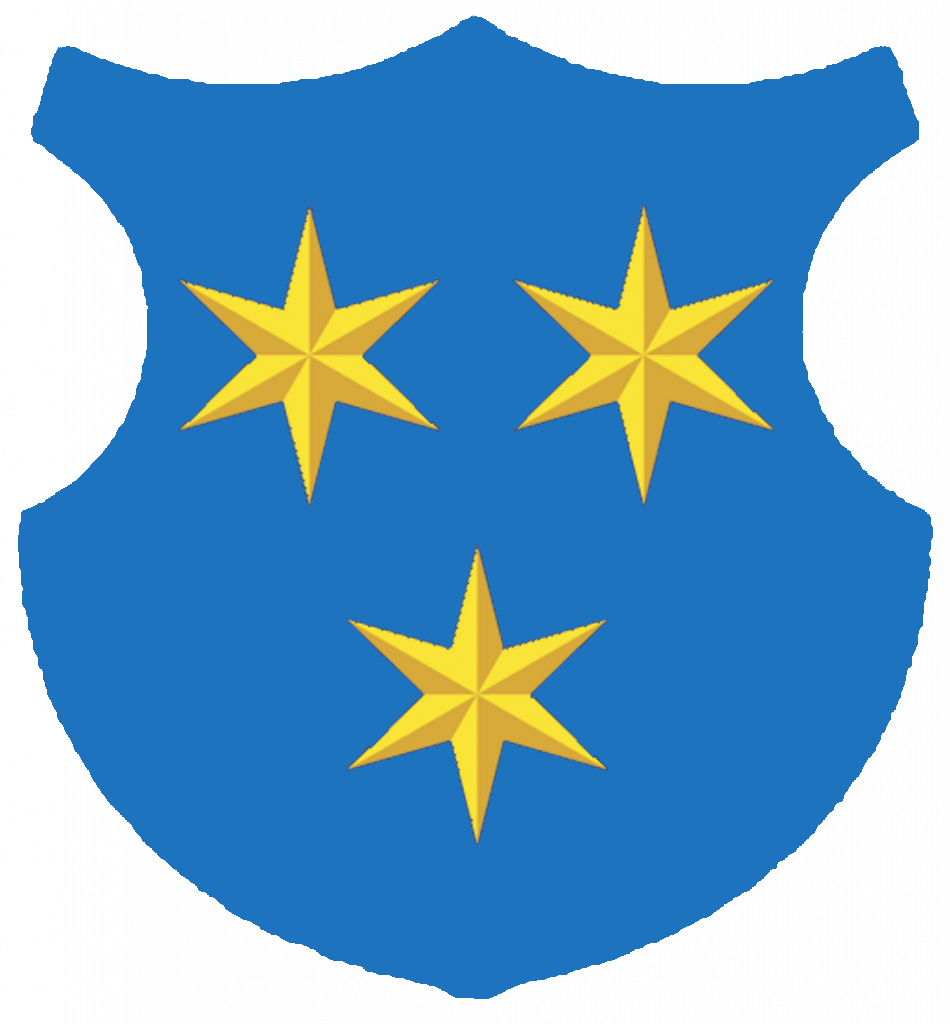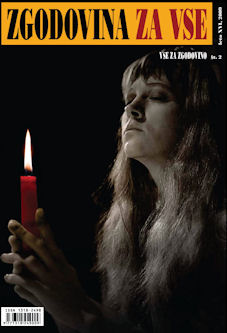THE PROBLEM OF HERMAN’S COURT
In his article, the author offers a new solution to the problem of the character of the court that processed and acquitted Veronika Desenice, the second wife of Count Friderik II of Celje, on account of witchcraft and poisoning in 1425. Friderik’s father, Count Herman, subsequently vented his rage on the young daughter-in-law, first by bringing her to trial and later by executing her extrajudicially. Up to now researchers have believed that the process took place in a secular court. However, the content of the charge, as presented in the only source, the Chronicles of the Counts of Celje from the mid – 15th century, shows that the case probably did not fit in the context of secular but rather church judicature.
“THIS WILL BE A RED-LETTER DAY IN THE HISTOR Y OF OUR READING SOCIETY.”
The First Decade of the Reading Society in Kranj
The reading society in Kranj was established on the 29th January 1863 as the eighth in a series of national societies that followed the model of the National Reading Society in Ljubljana. Regional government verified the reading society’s regulations on the 16th December 1862 (these were amended at the end of 1866). The society started organizing cultural events called “besede”. By the end of 1863 it had 113 members. The society moved from the original temporary location into Mayr’s house, in which the Kazina society had been located since 1846, and marked this occasion with a celebration on the 16th August 1863 (one of the celebrations took place at the grave of the poet France Prešeren). On the 13th September the society organized the first outing and organized a reception for members of the Južni sokol (Southern Falcon) society from Ljubljana on the 29th of June 1864. On this occasion, a musical performance took place in the society’s reading room. On the 20th August 1864 a branch of Južni sokol was founded. Following the example of the society in Ljubljana, it engaged in charitable activities (for the poor from Notranjska, victims of fire in Stražišče and poor school children). The society organized a solemn burial of Simon Jenko in 1869 and initiated raising a tombstone in his memory (it was uveiled in September 1873). In the 1870s enthusiasm for participation in the society waned. After a few years, however, the number of members began to rise again.
OVERVIEW OF THE DEVELOPMENT OF SOCIAL LEGISLATION UNDER THE AUSTRO-HUNGARIAN MONARCHY IN THE YEARS 1867-1918
The author uses Official Journals from the years 1867-1918 and contemporary literature to show the main stages in the development of legislation concerning the care for the poor and the protection of workers. She presents the provisions of the homeland law with respect to care for the poor and the care duties whose implementation was imposed on the municipalities. The article features the statute from the 25th March 1883 that endorsed state financial support for people in need. The statute is compared to the Law from the 27th December 1902 that granted state aid for the mitigation of poverty. The article continues with an overview of labour protection legislation under the monarchy, after the development of industry and employment of a large number of new workers resulted in a completely new relationship between employers and workers. The development of this relationship is reflected in the provisions of the Craft Order and its amendment to the act. The article also presents in detail legislation from the field of worker protection. Accident insurance for industrial workers in the Austrian half of the monarchy was introduced with the law from the 28th December 1887, the first socialprotection law in Austria. A health insurance law followed one year later. In Prekmurje, which was in the Hungarian part of the monarchy, Hungarian legislation introduced the same regulations in 1891 (Hungary reformed compulsory health insurance in 1907).
“JEWISH SLAUGHTERERS MURDER CHRISTIAN MAIDSERVANT ESTERA SOLLYMOSSY”
Jewish ritual murder
The article deals with the murder of the 14-year-old maidservant Ester Sollymossy, which was allegedly perpetrated by Jews, including their rabbi, in Tisza-Eszlar in Hungary. This murder further strengthened the already wide-spread anti-Semitism among the people; the author analysed reports on the incident in the five major Slovene newspapers of the time in order to determine the level of anti-Semitism in Slovenia at the time. From the first short news items that appeared in June 1882, to the end of one of the most resonant trials of the decade in 1883, newspapers featured many short and long articles about the affair; Slovene newspapers, in particular the central Catholic daily Slovenec, did not hide their anti-Jewish orientation.
SILENT HEROES OF THE GREAT WAR
Horses, Dogs, Pigeons and Other Animals on the First World War Front
The First World War, with its multitudinous and diverse employment of animals for the purposes of war, surpassed all armed engagements to that time. The cavalry in that era was experiencing a decline. Despite being a military branch with a dazzling past, it had an uncertain future and was relegated to the edge of the battlefield. The horses, on the other hand, were harnessed into the military logistic apparatus to a much greater degree. During the First World War, the elegant horse , despite its motorized competition, pulled or packed thousands of tons of war material and personnel. The transport departments were additionally complemented with less high-strung, but more stubborn first-class pack animals: the mules, the adorable and sturdy donkeys, the strong oxen and other animals. If horses were the most numerous, dogs were employed most diversely. Thus they would save wounded soldiers, carry messages, go on patrol, and protect objects and soldiers in trenches. Pigeons surpassed dogs when it came to carrying messages, until darkness or fog descended upon the battlefield. Some animals only made the lives of the soldiers more miserable. The louse and the rat are synonyms for trench combat. Others again reawakened often forgotten love, warmth and compassion in the soldiers.
“SHE HAD COME TO KNOW CUPID BEFORE SHE MET THE REGISTRAR.”
Slovene and Italian Authors Dealing with Problems of Sexuality in the Bourgeois Era
The article deals with the differences in the treatment of sexual practices that existed between works that were published in central Slovenian regions and works that were published in Trieste, Koper, Gorizia and Reka during the bourgeois era. These were mostly written by Italian-speaking authors, who wrote about topics such as women sexuality, masturbation, sex education and sexual diseases with no major constraint. They were able to do so because they had come to realize that ignorance did not help protect morality and that it was no longer possible to keep quiet, given the alarming rate with which sexual diseases spread. While Italian writers openly supported birth control, the use of condoms, education of the young and strict hygiene in brothels, their Slovene counterparts adhered to moral teachings and complicated terminology that referred to the subject matter only indirectly. Slovene and Italian writers shared only the similarly uncompromising attitude towards masturbation; however, even here the two sides differed in their approach: Italian authors talked openly about the phenomenon and threatened every possible and impossible consequence that might deter individuals from performing it, while Slovene authors preferred simply to avoid this problem.
“DESPONDENCY HAS BEN A THING OF THE PAST SINCE I SUBSCRIBED TO ŽENSKI SVET (WOMEN’S WORLD)”
The magazine Ženski svet (Women’s World) represents an important part of the Slovene women’s movement between the world wars. Although it never styled itself as a feminist magazine, its authors included the most progressive publicists of the time (Angela Vode, Marja Bošnik, Lojzka Štebi) and writers (Dora Gruden, Milena Mohorič, Marijana Kokalj Željeznova, Erna Muser, Milica Ostrouška, etc.). Among Slovene magazines that addressed mostly women readers, Ženski svet had the longest life-span in the period between the world wars. It addressed both rural and urban women and was also popular because of its fashion supplement with dress patterns. Once university-educated Slovene women started writing for the magazine, it became more interesting even for educated women. The authors addressed topical themes, which resulted in heated debates (discussions about the right to abortion in 1936, about celibacy for woman teachers, the marriage crisis and prostitution). Of all women’s activities between the world wars, the magazine Ženski svet probably most directly reflected the efforts and the necessary compromises that those women faced who could no longer accept the role of silent social observers.
STRUCTURAL CHANGES IN SLOVENE ENTREPRENEURSHIP DURING THE “FIRST” RECESSION
After the first quarter of 2009 Slovenia officially entered the recession that was the result of the global financial and economic crisis. This was the first recession since our country started transformation recovery in 1993. It resulted in lower levels of economic activity, collapse of companies and a high unemployment rate. In his article, the author sheds light on developments in Slovene entrepreneurship during the “first” recession, which, however, did not have the same causes as today’s but was the result of the change from a socialist to a market economy and from a regional to a national economy.

